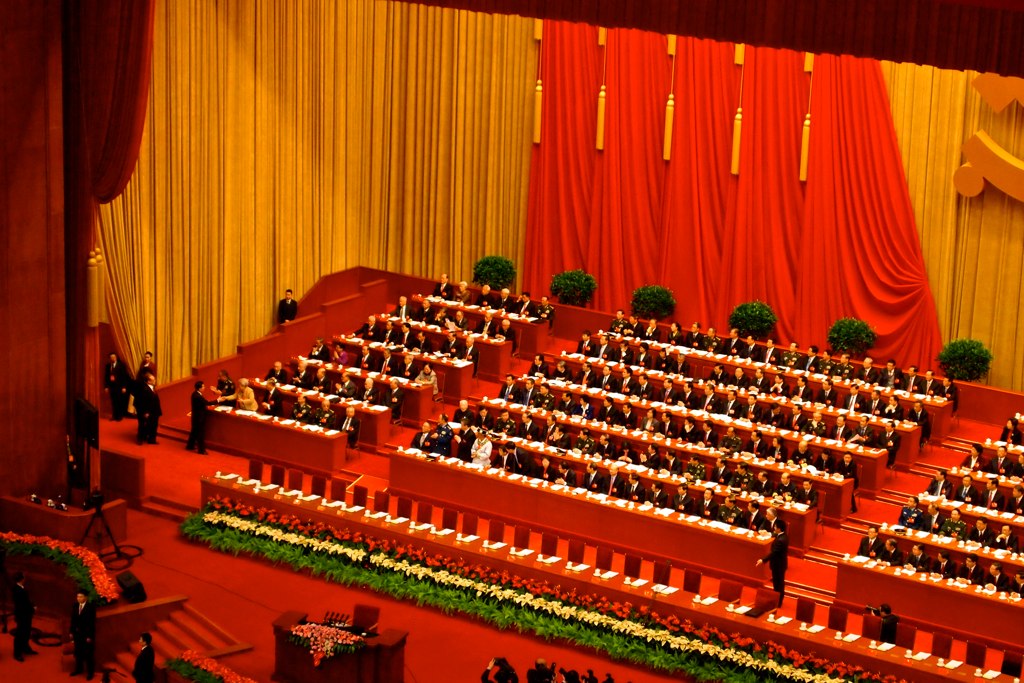Asia and Biden's Nuclear Posture Review
Expectations or concerns about major shifts in the U.S. nuclear posture review have not really matched the outcomes from the exercise that began with the end of the Cold War. All U.S. presidents since Bill Clinton ― George W. Bush, Barack Obama, and Donald Trump ― have produced these reviews.
The results of these reviews have been modest and have oscillated within a narrow band between the Republican emphasis on strengthening the U.S. nuclear arsenal and the Democratic desire to minimize the reliance on nuclear weapons.
Nonetheless, the Democrats have struggled to translate this into practical policy. The enthusiasm of the Democratic presidents to make bold departures from the nuclear doctrine have always met stiff resistance from the Pentagon and the nuclear traditionalists.
U.S. allies in Asia and Europe have always cautioned against radical departures in American nuclear policy that might weaken American security commitments to its close partners. Any drift toward nuclear “no-first use,” the allies fear, will increase the incentives for Russia and China to mount sub-nuclear attacks on their neighbors.
This time around, the Biden administration is under greater pressure from the progressive constituency in the Democratic Party to pronounce that the “sole purpose” of nuclear weapons is to deter a nuclear attack by an adversary.
During the presidential campaign, Biden often said, “Deterring, and, if necessary, retaliating against a nuclear attack should be the sole purpose of the U.S. nuclear arsenal.” Biden, however, gave himself some room by adding the caveat that his administration “will work to put that belief into practice, in consultation with our allies and military.”
A similar balancing effort is seen in the Interim Strategic guidance issued by the White House in March of last year, which promised to “take steps to reduce the role of nuclear weapons” in U.S. strategy while ensuring at the same time that “our extended deterrence commitments to our allies remain strong and credible.”
Meanwhile, the very talk of reducing the role of nuclear weapons and adopting a posture of “no-first-use” of nuclear weapons has been met with significant bureaucratic pushback within the United States as well as the allied lobbying against the idea they fear would weaken the U.S. nuclear umbrella for its allies. Washington apparently has assured allies that the administration will not adopt a “no-first-use” doctrine, while fiddling with language that might satisfy the progressives in the Democratic Party.
Verbal gymnastics with the language of the posture review, however, are unlikely to resolve the structural challenges confronting the U.S. and its Asian allies on the role of U.S. nuclear weapons in the regional security order. These challenges are rooted in the profound regional redistribution of power in favor of China that tests the long term sustainability of U.S. alliances far from its homeland as well as the credibility of its U.S. nuclear umbrella in Asia.
Fortunately, there is renewed commitment in Washington to Asian alliances that Biden’s predecessor, Donald Trump frequently trashed. In fact, Biden’s Indo-Pacific strategy underlines the centrality of alliances by affirming that the U.S. “will prioritize our single greatest asymmetric strength: our network of security alliances and partnerships.”
Translating that ambition into reality will be hard amidst the rapidly growing Chinese military power, the modernization of its nuclear arsenal and its assertiveness on territorial disputes with its Asian neighbors, including the threat to invade Taiwan. Then there is the continuing North Korean nuclear challenge. In these circumstances, the credibility of extended deterrence is now tied to three important factors.
One is the question of deploying more nuclear weapons in Asia to strengthen the U.S. nuclear umbrella. This move might also serve as an antidote to pressures on some allies to develop their own nuclear weapons. While the logic of more nuclear weapons might make sense to some from the operational requirements of strengthening extended deterrence, it is bound to sharpen political cleavages in the domestic politics of key allies.
Second, another way of boosting deterrence in the region is to strengthen the conventional military capabilities of U.S. allies, thereby raising the threshold for nuclear escalation. Many countries in East Asia are already moving in that direction by acquiring more missiles with longer ranges that can be equipped with powerful conventional warheads. This trend is bound to blur the firewall between nuclear and conventional deterrence.
Third, imperatives of strengthening extended deterrence have seen the US lift all restrictions on missile production by South Korea and take the unprecedented step of supplying nuclear-powered submarine technology to Australia (a non-nuclear state) along with the United Kingdom. Although this move is technically legal under the nuclear non-proliferation treaty, it marks an important political discontinuity in U.S. nuclear policy.
After years of emphasizing restraint in transferring sensitive nuclear technologies, the U.S. now appears to be moving toward “conditioned proliferation” among key allies and partners to allow them to contribute to their defense better. While the debates surrounding the U.S. Nuclear Posture Review tend to be too rigid, Washington is adapting ― willy-nilly ― to the new geopolitical dynamic in Asia that has exposed the old verities of nuclear arms control. Given the scale of the challenge that the newly risen China presents to the U.S. primacy in the region, this situation was but inevitable.
C. Raja Mohan is a senior fellow with the Asia Society Policy Institute, New Delhi and a visiting research professor at the Institute of South Asian Studies, National University of Singapore. He is also a member of the Asia-Pacific Leadership Network for Nuclear Non-Proliferation and Disarmament (APLN). His article is published in cooperation with the APLN (www.apln.network).
Disclaimer: The opinions articulated above represent the views of the author(s) and do not necessarily reflect the position of the Asia Pacific Leadership Network or any of its members.
This article was published in The Korea Times on 16 February 2022 as part of a dedicated, regular Korea Times column with analysis by APLN members on global issues. You can find the original post here.
Image: , CC-BY-SA 2.0




